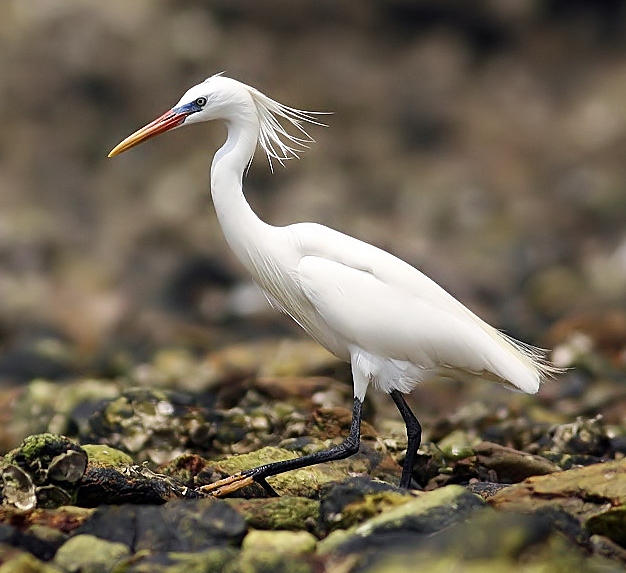 |
| Photo by Tim Edelsten (Birds Korea) |
Common name:
Chinese egret (en); garça-chinesa (pt); aigrette de Chine (fr); garceta china (es); schneereiher (de)
Taxonomy:
Order Ciconiiformes
Family Ardeidae
Range:
These birds breed in small islands off the coasts of South Korea, North Korea and across the border into north-eastern China and south-eastern Russia. They migrate south to winter in Vietnam, the Philippines, Malaysia and northern Indonesia.
Size:
The Chinese egret is 65-68 cm long and has a wingspan of 97-114 cm. They weigh 450-500 g.
Habitat:
They are mostly found in coastal areas such as estuaries, bays and offshore islands, along mangroves, mudflats and rocky shores. They are also found in rice fields and aquaculture ponds.
Diet:
Chinese egrets feed on fish, small crabs and other crustaceans, worms, insects, small aquatic invertebrates, amphibians and small reptiles.
Breeding:
These birds breed in April-July. They form breeding colonies in offshore islands, with each pair building a disc-shaped nest made of straws and sticks, lined with grasses. The nests are typically placed on trees, 12-18 m above the ground, or sometimes in lower trees or scrubs. The female lays 3-5 pale blue-green eggs, which she mostly incubates alone for 24-35 days. The chicks are fed by both parents and fledge 36-40 days after hatching.
Conservation:
IUCN status – VU (Vulnerable)
The Chinese egret has a relatively large breeding range, but the global population is estimated at just 2.500-10.000 individuals. The population is suspected to be declining by 20% per decade due to habitat loss and degradation through reclamation of tidal flats, estuarine habitats and uninhabited offshore breeding islands for infrastructure, industry, aquaculture and agriculture. Pollution and disturbance of the breeding colonies are two additional problems.







